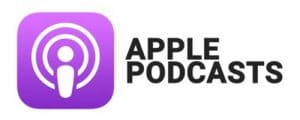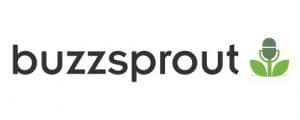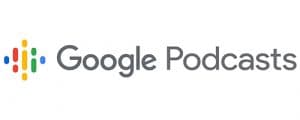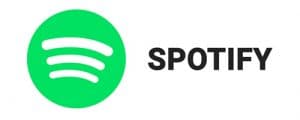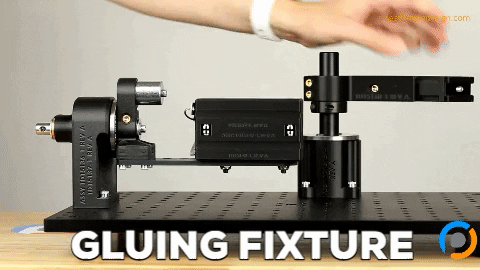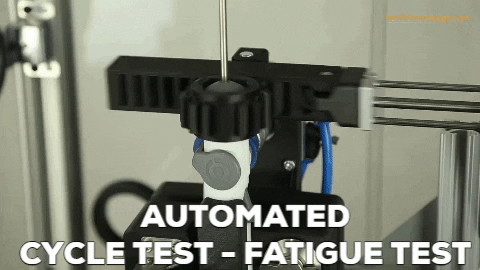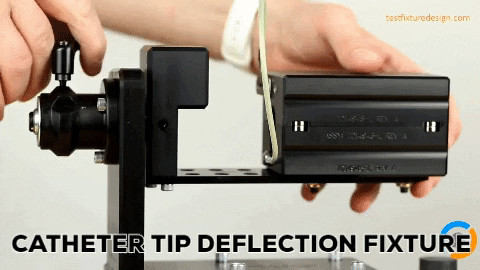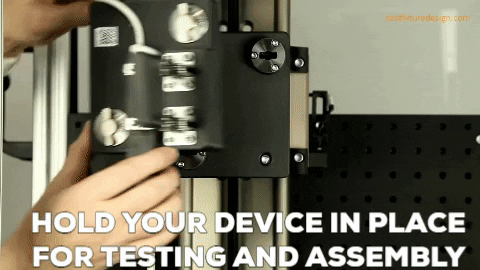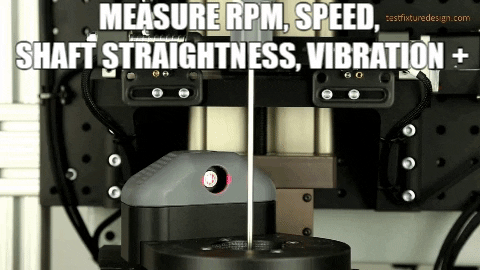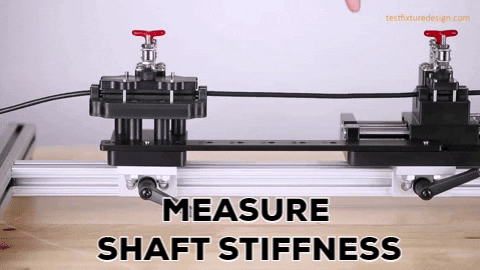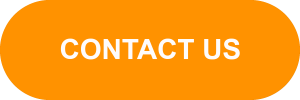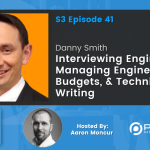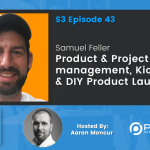Arne Lang-Ree | Hand Sketching, Defining Requirements, & Design Reviews
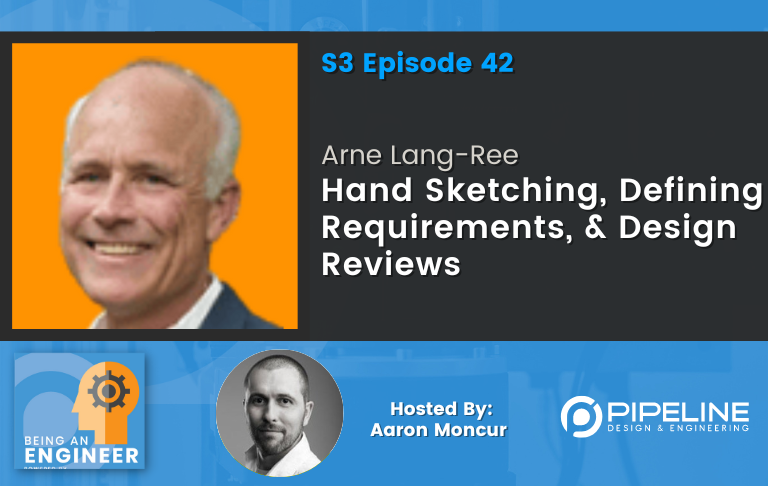
Who is Arne Lang-Ree?
Arne Lang-Ree holds a Bachelor’s degree in mechanical engineering and a Master’s degree in product design from Stanford University. He has worked within a variety of design areas from toys to sports to premium products. Arne is the founder and CDO of Spanner Product Development. He and his team develop exquisitely crafted consumer products in the heart of Silicon Valley.
EXPAND TO VIEW EPISODE TRANSCRIPTION
SUMMARY KEYWORDS
engineers, sketching, people, cad, design, product, prototypes, tools, super, project, develop, parachute, objectives, machines, big, work, spanner, ball, engineering, team
SPEAKERS
Presenter, Arne Lang-Ree, Aaron Moncur
Presenter 00:00
Hi everyone, we’ve set up this being an engineer podcast as an industry knowledge repository, if you will, we hope it’ll be a tool where engineers can learn about and connect with other companies, technologies, people, resources and opportunities. So make some connections and enjoy the show.
Arne Lang-Ree 00:18
You know, I think the first thing that struck me was a sense of craft, that a lot of these, you know, the professionals on the line electricians, sheetmetal workers, welders. You know, there’s a lot of pride in their craft, just to kind of see that at work, how they went about their business.
Aaron Moncur 00:50
Hello, and welcome to another exciting episode of The being an engineering podcast. We’re talking with Arne Lang-Ree today who holds a bachelor’s degree in mechanical engineering, and a master’s degree in product design from Stanford University. Arne has worked within a variety of design areas, from toys to sports to premium products, and is the founder and CDO of Spanner product development, where he and his team develop exquisitely crafted consumer products in the heart of Silicon Valley. Also, this is a special treat for me, because Ana was one of the first people to hire me, way back in the day after I had just started pipeline. And that Job was one of my first what I thought of at the time is big contract. So it’s it’s very cool that I get the chance now to interview Orna Welcome to the show. Thanks for being with me.
Arne Lang-Ree 01:40
Well, thanks, Aaron. Absolute pleasure to be here.
Aaron Moncur 01:43
Okay, what made you decide to become an engineer?
Arne Lang-Ree 01:48
Yeah, I don’t know, if it was ever really a decision. It just was kind of the flow. My dad was a mechanical engineer. So I had a pretty good idea. I think early on, that engineers got to sort of dream stuff up and then make them you know, as a kid, like a lot of people that end up in this field. Anything in the house that broke was mine to tear down. You know, I just fascinated by how everything went together. Like, what all the parts and pieces were, how did they work? You know, from washing machines to transistor radios. When I was a teenager, I worked in my dad’s fabrication shop, just go for on the assembly line. So you know, again, just getting a hands on sense of of how things were, how things were made, assembled, and all that. So it just kind of felt like the natural flow of things to just go on into engineering school.
Aaron Moncur 02:46
I’m curious about your time working in your dad’s fab shop. What were you mentioned? Gopher, what? What were some of the things that you did there? And how do you think they built a foundation for you? Or maybe what were some of the most useful things you did to build that foundation?
Arne Lang-Ree 03:05
Yeah, so just quick context, they made food processing machinery SO, SO big machines, lots of stainless steel, you know, the electrical controls, the motors, all that kind of stuff. And you’ve probably seen one of their machines, they’re in every single Burger King in on the planet, the machine that flame broils your burger back there. You know, I think the first thing that struck me was a sense of craft, that a lot of these, you know, the professionals on the line, electricians, sheetmetal workers, welders, you know, there’s a lot of pride in their craft. And it is probably something my dad recognized when he hired them, but just to kind of see that at work, how they went about their business. You know, my job was deburring sheet metal or putting, stripping and putting terminals on the ends of bits of wire, you know, degreasing stuff that was going to go in the machine, just all the stuff nobody else wanted to do. But I think it gave me a very visceral experience with with material, you know, to understand how stainless steel, you know, in sheet metal form behaves, say and what goes into all of that, you know, why it’s important to be tidy about things that that users may never see. You know, the electrician jumps out. You know, he was very fastidious about routing wires in the control boxes, making sure all the terminals were labeled properly. Wires are cut to the correct length. You know, it’s a work of art. But there’s there were reasons for doing that. You know, it was sort of eye opening that way.
Aaron Moncur 04:57
So you’re you’re it In my opinion, anyway, a very successful leader of engineering teams at this point, you’ve had a successful career, you’re welcome. And I would love to try and kind of reverse engineer how you got there a little bit so that people listening to this can try and adopt the same mindsets, the same behaviors and practices. Do you recall when you were working? Back in that fab shop, you know, doing the the grunt work, for lack of a better term? What was your mindset? Then? What was it one of feeling put out that you had to do this? This grunt work? Or was it one of the this is great, I’m really happy and grateful that I get the opportunity to learn these things.
Arne Lang-Ree 05:41
Yeah, I think much more of the latter. I found everything in there fascinating. Because, you know, my dad would take my brother and I to the shop, you know, when, when we are growing up, so we’re no stranger to it. And to get to finally worked there, in the one hand felt sort of a privilege. There was also a sense of wanting to prove myself that I’m not just there, because I’m the boss’s kid, and I’m going to be a slacker. You know, I wanted to prove to the guys on the floor that, you know, I was happy doing that work. I could do a good job. You know, and all of that.
Aaron Moncur 06:21
Earning your place. Yeah, that’s great. Okay. Well, eventually, you graduated from from the shop. And earlier in your career, you went on to design toys. I wondered, are there any memorable toys that listeners might remember? And what was your favorite one that that you designed?
Arne Lang-Ree 06:40
Yeah. I think probably the most memorable that most people go oh, yeah, I had one of those was the vortex football. So at odds on which is the company that that they started by with a koosh ball. And it was launched by another mechanical engineer, by the way. So the vortex ball, you know, with the tail on it, and you could throw it farther, just because they had a tail, it was more aerodynamic. You know, everybody remembers that toy. So it was super fun to work on that product line. Because we’re always trying to expand is the next one going to be you go even farther. So it has to be more aerodynamic. And how do we do that in a toy. And, you know, the hours of going back and forth between the model shop into the parking lot and throwing my shoulder out. And you know, was super fun. I got to go on one of the shoots for the Saturday morning commercial. When John Elway was their spokesperson. Oh, so I’m like right off camera with a box of vortex balls, like feeding them to LA. So you can come down the field. You know, lots of lots of really fun stuff like that. My favorite, I think just as a designer, probably not too many people know. But you might know the company klutz. They have, they’re more like, like craft books, they’re more like a publisher of activity books and things. But all of their books typically would come with some material that you would then use, you know, to accomplish the craft or whatever it is in that book. And I did a bunch of stuff for them. But my favorite was, had nothing to do with a book, it was a parachute toy. So the founder there had this notion and he actually built this first prototype of a ball about the size of a softball or grapefruit with a big parachutes stuffed in it and a piece of webbing that you could then you know, sling it up into the air. But he wanted the parachute to open elegantly right at the top of the ark, you know, and just poof, magically, at the top every time. But of course, you know, like any other parachute toy, when you’re a little kid, you’re trying to throw it in the air, the parachute opens on the way up. And it’s, you know, frustrating as can be. So he challenged me to come up with a way to do that, you know, no batteries, no mechanism, just naturally, the way the parts came together that that would happen. So it was one of those sketchbook aha moments. You know, just realizing that if the ball opens this way, then you know, as the air flows around the ball, that there’s low pressure on the sides, and that’s going to pull the ball apart. So if we could make the ball fly this way. So I ended up putting an extra piece of leash on there that came around and hooked to the far side, and then the drag on the leash, kept the ball together, but as soon as it stalled out and the leash would kind of catch up, it would unhook and the bucket open. Okay, brilliant. So it was kind of all of those elements coming together. As I’m sketching away, just sort of stopped and went Wait a minute, and ran to the garage and prototyped it and it all worked.
Aaron Moncur 09:59
How Big of the a part in your design process does sketching something out play, just just the act of note CAD, just a pen and a paper or pencil on the paper.
Arne Lang-Ree 10:12
I think it’s huge. CAD is an amazing tool. And like any tool, I think it has its place, I think early on in that conceptual part of a process is is not the place I think it, it tends to have us commit to something prematurely, where sketching, whether it’s in your logbook, or or on a whiteboard, it’s much more sort of throw away, you just want to get stuff out of your brain. So you can sort through it on paper or on the whiteboard or whatever. It’s not, you’re not as committed to what you’re putting down. So you can just kind of, you know, move on, you know, scribble it out, or just start over or just keep going. You know, in CAD, you have to think about a little bit, you have to kind of build some underlying layout or skeleton to kind of keep going and that, you know, we don’t it’s not as throw away, you don’t want to go back and just toss that. So I think getting fluid with, with sketching, you know, sort of thinking on paper, is super powerful skill.
Aaron Moncur 11:31
How gifted? Do you think an engineer needs to be with their hand sketching abilities for it to be a really useful activity? I mean, do we need to be 3d artists on paper? Or can we get away with, you know, just kind of blocky things to the shapes?
Arne Lang-Ree 11:46
Yeah, I think if you’re sketching in your own idealogue, you never have to actually show that to anybody. So, you can just kind of leave yourself consciousness, you know, at the door, if you will, and, and just go as long as you get a sense for what you’re putting down. That’s what’s most important. I do think it helps with the fluidity if you’re confident in some sketching skills, but super basic, you know, often we’re sketching mechanical concepts in in section and 2d elevations anyway, you don’t have to get super fluent with with 3d, but it does help to be able to kind of do a quick sketch in perspective, you know, so buy a sketchbook that, you know, there’s plenty out there in the market, you know, like, spend time practicing drawing cubes and cylinders and whatnot. With a little bit of perspective, it can help a lot, because you do sometimes need to get to that point where you’re communicating your ideas to others, and you’re trying to generate, you know, a kind of collaboration. So it helps to be able to communicate clearly in sketch mode as well. But I think that comes second.
Aaron Moncur 13:03
Yeah, that’s probably an underappreciated skill that a lot of us should spend some time developing. I don’t think I ever had a class like that in college. But that would have been a really useful one, just basic principles of perspective and 3d sketching. I’ve got a question for you that this is for me. Me as a business owner, I’m curious what your your thought is on this kind of a completely different subject you’re working with, with junior engineers who are relatively inexpensive to employ, but but they lack experience, and senior engineers who are super productive, but also very expensive to employ? Do you have kind of like, a rule of thumb or best practice for how many of each group should be part of a given team?
Arne Lang-Ree 13:58
Yeah, I think as an engineer, my answer is it depends. Of course, I mean, that’s a kind of a common conundrum. I don’t use any right answer. I think there’s a right fit for any particular organization. For instance, that Spanner you know, we’re a consulting firm, we’re in Silicon Valley, our rates are pretty high. We know that. So our team is intentionally built around a much more senior staff. We have a couple of dozen engineers, designers, and they average 20 plus years of experience. You know, at that size, it’s tough to make economic sense out of, you know, having somebody on staff who’s not as efficient with their hours and also take some time away from senior staff who are you know, in the mentorship role and kind of showing them the ropes and all that kind of stuff. You know, you can make up for some of that in the economics of that. dates that we charge. But a deadline is a deadline, and it’s the works got to get done. And, you know, so it tends to create more overhead than it’s worth. But in larger organizations say a spanner is now, you know, we’re growing, I think having more headroom gives us a space to bring in younger engineers, because there’s advantage that as well, not just the economic advantage of lower rate and whatnot, you know, designers, engineers, that are more of say, more fresh out of school out of a certain, you know, curriculum, they’re gonna bring fresh ideas, fresh perspectives, tools that they’ve learned along the way. You know, and that’s its competitive advantage, or at least it’s, it’s kind of keeping up with what’s happening in the world, in that sense. And then there’s just the larger you know, kind of paying it forward, you know, because we all had mentors, we all had people who spent time helping correct our mistakes. And sure, you know, showing us the way. So, you know, we love to be in that role as well. So we currently have three folks kind of at that level, you know, hopefully more as we grow.
Aaron Moncur 16:21
Yeah, yeah. Okay, fair enough. Well, you brought your been involved anyway, with bringing quite a few products to market. And one of the things you’re very good at is doing so quickly. Do you have any kind of like prized strategies were or favorite processes or tricks? Maybe tricks isn’t the right word for it, but tools that you use to go to market quickly, really accelerate that timeframe?
Arne Lang-Ree 16:50
Yeah, you know, and you make me think of once in a while a client will come in, and, you know, I want to hire you, your senior guys. And you should be able to get this done quickly. And we tend to redirect that conversation that, you know, if we’re good, it’s good, because we do things well, or we do things right, or appropriately not because we do things any more quickly. You know, it there’s, there’s a what’s the word? I’m looking for? Induction? So in electrical engineering, you know, there’s, the harder you push, the harder the more resistance there is, right? There’s, there’s, I think design is sort of a natural law of the same ilk, right? That the more people you put on it, the harder you try and push, the more resistance you’re going to get that just you increase the odds of things going wrong, rather than decreasing them. So you know, one of the things we’re fond of saying, too, it’s, it’s, you know, an adage, but the, make the right thing, and then make the thing, right. I think that comes from the Agile school. And I’m still not convinced that agile works in hardware development. But I think the adage is appropriate that so in order to save time, we actually dedicate an appropriate amount of time upfront to make sure that we’re super clear on the product definition. That before we get into CAD design concepts, and whatever, we’re taking the right amount of time to get really detailed in the product. requirements.to have all those debates or arguments about different features, you know, holding that up to the mental construct, right, of a, of an MVP, minimally viable product, and making sure everything is pointed at the appropriate user experience and really hammering that out. And that may involve some engineering investigations, you know, kind of first order reality checks, kind of thing.
Aaron Moncur 19:00
Yeah. How do you know that you’re really clear on the problem, and that you have all the right requirements? What are some tools that you use to develop that?
Arne Lang-Ree 19:11
Yeah, I mean, a lot of it is simply kind of the collective wisdom are on the table and you know, enough scar tissue from things having gone wrong in the past. But, you know, if we need to do some reality checks, and reach out to other domain experts, or do some, you know, back of envelope calculations, or, or kind of do some quick layouts or XYZ stacks and to make sure volumes are working or, you know, whatever it is, that phase will include those kinds of activities to make to validate, but then, you know, it’s a, there’s a threshold of competence, where you’re never going to get to that 100% But at least you understand if there are things that are unanswered it least you understand the questions better? And how to prioritize going into the design phase?
Aaron Moncur 20:06
Yeah. What are a few of the biggest mistakes that you see engineering teams making on new product development projects?
Arne Lang-Ree 20:14
Yeah. Well, aside from not spending enough time and definition, I think the aforementioned sketching, so getting into CAD too quickly, and committing before spending enough time kind of getting broad with with concept development. And then, on the flip side, getting too far in CAD, before doing any kind of prototyping, you know, so if you’re kind of getting into the nitty gritty of the, the model in CAD, and you haven’t made anything, yet, you’re probably kidding yourself about something. You know, so it’s the prototype early and often. thing. So that’s kind of another mistake is you can never make too many protos. You know, start super course. There’s nothing wrong with popsicle stick and, and paperclip. Prototypes, you know, as long as it helps you visualize what’s going on, you know, is entirely the point and then and then gradually build the integration sophistication of your proto along with the with the concept. The CAD is the is the tool that enables all of that. And obviously, you can do a lot of analytics and things. But make sure you’re living in the physical world. Yeah, alongside
Aaron Moncur 21:46
a friend of mine, who was also on this show, Joel Williams, has a phrase, he calls out real good versus feel good. And I think as engineers, sometimes CAD can be feel good, but not real good, right? We all love getting into CAD, but like you say, sometimes it’s not the right, the right tool, or at least not the right time in the project to use that tool. You’ve you’ve worked managing engineers and design teams for a long time, have you found any effective methods of allowing engineers and designers the freedom that they need to feel creative and happy with their autonomy, but, but also giving them enough guidance, so that they don’t spend too much time going down? rabbit holes that, you know, just aren’t going to be fruitful?
Arne Lang-Ree 22:32
Yeah, you know, I think as a, as a manager, managers, we need to just sort of start with a healthy dose of humility, and understand that whatever we have going on in our heads is, you know, probably the not the most effective answers just one answer and to give our, our teams the space to do that, you know, hire great people and let them do their thing. So I think first, making sure that team has the tools, you know, and the practices support structure to operate within. And they feel safe about making prototypes that are disastrous, because you just learn more that way. And then, if there is, you know, providing oversight, but in the, in the context of of making sure everyone stays staying on point staying on the objectives. So the things that come out of the definition phase, say, to use that as the touchstone and redirect to objectives, if that’s what needs redirection not necessarily micromanaging the execution of the design, you know, so what if you would have put the rib in a different place? It’s, you know, managers need to kind of get over themselves in terms of that. And then at the same time, you know, insist on on regular design reviews. You know, everybody needs that critical feedback. Make sure you leave space between reviews to let engineers do their thing, flex their muscles, but have those moments where you can come back and make sure that we’re still on point with, with whatever the objective is.
Aaron Moncur 24:23
Yeah, that those are great answers. And I really liked that you mentioned, helping engineers feel safe. That’s something we talk about quite a bit here a pipeline is making each other feel safe and we’re not talking about physical safety. We’re not worried that someone’s going to sucker punches in the parking lot or anything like that. But psychological safety right? If if someone makes a mistake on the team, are we worried that other team members are going to pounce on us and you know, the say something mean or nasty or do we have the faith and confidence in our team members to know that if we make a mistake, others are going to gather around and support us and say, Hey, don’t worry about it, man. We got your back. And I think making people in general, but in this context engineers feel safe is one of the great tools that we have as managers to facilitate that, that creativity and productivity.
Arne Lang-Ree 25:13
Yeah, 100%.
Aaron Moncur 25:15
Well, I’m gonna take a very quick break here and share with the listeners that Team pipeline.us is where you can learn more about how we help medical device and other product engineering or manufacturing teams, develop turnkey equipment, custom fixtures and automated machines to characterize, inspect, assemble, manufacture, and perform verification testing on your devices, or speaking with our langree today. Now I know what are a few of your favorite tools for managing product development projects could be, you know, something general, like having one on ones with people? Or could be a specific app you use? Or maybe there’s some kind of machine that you love for prototyping? Just anything like that? What what comes to mind?
Arne Lang-Ree 26:02
Yeah, I think we were just talking about one I mean, in terms of the one on ones staying in touch with the team checking in with people, you know, what are the concerns what, you know, what kind of, you know, emotional state sounds a little woowoo. But, you know, where’s everybody at at that moment, I mean, we all have lives, right. And just keep that in mind. And creating that space for people to to excel. And then having a space, or the materials, you know, if we’re, if we’re encouraging people to make quickie sketch prototypes, well then have some materials and some tools to do that kind of stuff. You know, even if it’s the hot melt, glue gun, and the aforementioned popsicle sticks and foam core, or a box of Lego Technic, fantastic tool for quick mock ups of linkages and mechanisms and everything, and you can go nuts, you know, probably as we all did, when we were kids. I think digitally, we’ve we’ve not we’ve looked a lot, and we’ve not found sort of a single digital platform that works, you know, from from A to Z, and other you know, design firms that we’ve talked to, they find the same thing, everybody kind of ends up using a few favorite apps or platforms, and then patching it all together with smart sheets, and you know, other things to make it work for them. And that’s what we do, as well, we’ve got some pretty monstrous Google Sheets and sprint and smart sheets that we we’ve put together, they still break. But you know, we’ve we’ve put it back together and they work fine. And beyond that other apps. You know, as a design firm, we use harvest for for, you know, timesheet and expense tracking and invoicing and those nuts and bolts stuff. We use notion for it works sort of like for us like a title page. So that, you know, for any particular initiative or project, we’ve kind of gathered everything in one place. Even though it links out to other tools, and then stuff like Miro for, you know, shared whiteboards. You know, it’s a collaboration space can be pretty effective.
Aaron Moncur 28:36
That’s great. I had not heard of any of those. I’m gonna check them out for myself now. All right, well, shoot, this might lead maybe it’s a good segue into the next question, what, what’s one tool and I’m using that word, you know, kind of loosely, that that doesn’t exist, but if it did, would dramatically increase the speed with which engineers are able to develop new products. It can be even mythical, if you want doesn’t need to obey the laws of physics, so feel free to be, you know, pretty out there with your answer if you want. Yeah.
Arne Lang-Ree 29:10
I think it would be that mythical platform where it’s some mash up of things like mirror. So there’s some collaborative space where you can be really loose, where you’re just dropping a bunch of screen captures from things you find on, you know, on Google images, or it’s, you know, Mind Mapping, very loose, nonlinear kind of things. But, you know, at the front end, gives you a place to plan you know, to capture those objectives in a way that you can continue to check in with them and, and have a living document in there that constitutes the plan. And then sort of follow so take like Microsoft Project, and I want to I don’t want to rain on them, but it’s just it’s an easy example. That kind of Gantt Chart thinking is great for planning, right? But in my experience, especially the bigger the project grows, you need a staff to manage Microsoft Project to track your, your actual program. And sometimes the roles reverse, like, you feel constrained about pivoting to, you know, to get the best design, but you’re constrained by the Gantt chart, you know, oh, my gosh, we can’t we can’t break project. It’s tells us that we need to do these things. So something like that that was way more fluid and flexible and move through the process like we do. So I don’t know Aaron’s view, and I should retire and build that.
Aaron Moncur 30:56
That sounds like a lot of fun. Well, that’s a great answer. Let’s see, can you share one of the processes, we talked about some tools? And this is a similar question, but one of the processes that your team uses that has proven to be pretty beneficial to your customers and in the projects that your team works on?
Arne Lang-Ree 31:18
Yeah, I think it’s, it’s creating some working documents, very simple stuff, to have handy for conversations with clients. So for instance, you know, a storyboard in where we’re engineers, that’s supposed to be the domain of, say, industrial designers, because they know how to sketch people. But really, a storyboard is a super efficient and effective way to capture what we’re designing for. It’s ultimately the context. And it doesn’t for consumer product and stuff, it’s about what’s the user experience? What’s the problem for this person that you’re trying to solve? How does the product work in their life? And it can just be a super simple stick figure, kind of thing. And then the other is sort of the the gen two list, if you will, that as Feature Ideas come up or Feature Ideas that already exist for the product, but you need to, you need to peel them away, as you’re distilling what is the first product, say, of this company, out the door, have a keep a list somewhere of all these things, as a repository for stuff that you can use for for the next gen product. And it, it gives clients a place to put it mentally? Like, we’re not just saying, No, we can’t use that idea. We’re saying, Oh, great idea. Let’s put on the gen two lists, so we can stick to your go to market strategy, you know, we won’t delay this program, because that’s going to take some time to develop or whatever. And it really helps keep the conversation fluid and, and keep the relationship really collaborative. Sounds simple, but it makes a big difference.
Aaron Moncur 33:10
So this storyboard that you’re talking about, is this like, kind of like what you would see, I don’t know, if there was a documentary about how a movie was made, you’ve got like little cells in which there are pictures depicting, you know, one scene of events, and then the next and then the next, how does that apply to a product being developed?
Arne Lang-Ree 33:28
Yeah, no, it just, it’s, it’s exactly like that. You know, the, the objective for everything that we do, whether it’s a consumer product, or, you know, a bridge, or a new engine technology for a boat, I mean, who knows? Engineers do a lot of different things. But what we’re doing fits into some larger story. And, and keeping that really front of mind. What it is that we’re trying to solve for, what is that ultimate objective? What’s the problem that somebody in their life out in the world or lots of people have, that will be made better by what we’re doing. And that’s the story that we’re working inside of. So the simplest way to think about it is to is to kind of reel back to high school English. And if you remember that curve, there’s the flat part in the front, that’s exposition. And then there’s a bend in the curve, that’s the conflict. And then the rising action, the resolution. Those four elements, you can save the denouement stuff. It’s not as critical, but the exposition like who is this client, who is this user? What’s their world like? Are their competitors that we have to think about? Are there cost constraints, you know, what are all what’s all that context that informs the design and then the conflict is, you know, my boat users too much fuel or whatever it is, you know, we need better technology. it pollutes the ocean, then the action part, well, that’s you doing the design. So all the little problems that you got to solve along the way, all pointed at the resolution. And then so imagine what that is like, what’s the story look like when you’re done? You know, and keeping that front of mind and that we’re all working inside this, this, this larger narrative really keeps everybody on the same page.
Aaron Moncur 35:32
I love that. I don’t think I’ve heard it described in that way before, you know, of course, we use project quirements documents and you know, femurs, and things like that to kind of define the necessities of the project and assess risk and things like that, but I’ve never heard about it talked, talked about like that in story form, putting the whole thing into it, like a narrative, as you put it. That sounds really interesting. Now, do you? Do you literally like pictorially? visualize these things? Or is it just, you know, lists of different different bulleted lists or a mix of all of these things?
Arne Lang-Ree 36:14
Yeah, I mean, it, it doesn’t necessarily have to be stick figures, you know, because sometimes that’s just not appropriate. You know, like I said, engineering is a very broad field. But you could put together a flowchart that’s in more or less story form, like here are all the inputs, here’s everything that needs to get considered. And here’s where the whole thing falls apart where it’s broken. And how do we how do we rebuild, remap that flowchart to get us to the to the endpoint that we’re looking for?
Aaron Moncur 36:50
Yeah, that’s great. All right, just a few more questions. And then I think we’ll wrap things up. If you could put a short phrase on a billboard that would be seen by every engineer on the planet, what would it say?
Arne Lang-Ree 37:06
Well, now you got me all into narrative. So I’d say know the story. Now the story Simple as that, you know, whether it’s the user, your client, all the various stakeholders that are going to somehow interact with your, with your, with your project, you know, and lock onto those objectives. So yeah, no, that’s,
Aaron Moncur 37:27
that’s great. All right. This next question is, I think it’s kind of an unusual question to have for a podcast about being an engineer, but I really love it, because it just helps us get to know the guest, I think on maybe a more personal level. So the question is, what’s the most scared you’ve ever been? And you can take that from, you know, personal standpoint, professional standpoint, however you wanted? What’s the most scared you’ve ever been? And what did you learn from it?
Arne Lang-Ree 37:55
Yeah. What did I learn from it, but first is just being quite a bit more fearless. You know, there’s that there’s a popular bumper sticker, you know, no fear, I think is a brand. And has everything to do with launching spanner and how we how my business partner and I moved with, with Spanner, it’s, we’re constantly checking each other on what something is fear based, or not, you know, like, don’t live in the fear. There’s, there’s nothing to be afraid of. It’s just you know, that’s a, that’s a brainstem reaction. But the biggest, most fearful thing that sort of reset all of that, for me in a big way, was back in. In 99, our oldest child who was just shy of four years old, was diagnosed with cancer. Oh, my gosh, to like, hear that from the pediatrician. I mean, that, that sense of just everything caving in, you know, the whole world just kind of collapses. You know, it’s just absolutely terrifying. And I think, I don’t know, I’m just speculating, but maybe more so as a parent than if it were my own diagnosis. Yeah. There’s just so much more wrapped up in it. In cut to the chase, she’s absolutely great. She she did fabulously. It was a, it was a grueling and hellacious experience. But she’s gone on to do great things.
Aaron Moncur 39:34
Thank goodness. Well, yeah.
Arne Lang-Ree 39:36
But you know, it’s, it is a learning experience. You know, it’s, I’ve heard other people say this, about experiences like that, like, if you could go back, would you trade it? And obviously, knowing that the outcome was positive, it’s easy for me to say, No, I wouldn’t trade that I learned a lot. I know plenty of other families who would disagree You know what the outcome is different. But for me? Yeah, it reset a lot of things. Change changes perspectives.
Aaron Moncur 40:11
Thank you for sharing such a personal story first off that that’s amazing. And so happy to hear everything turned out well. It made me think of my answer for this, which is in the same ballpark, maybe not so severe as yours. But our son had a seizure one night when we were out at a restaurant and never happened before. So this was out of the blue for us and terrifying. Yeah, the seizure itself was bad enough, but it occurred. One, he was eating something, and he was just a year old. So he didn’t, you couldn’t tell us what was happening. And all of a sudden, he started turning blue. And then he was out. And the paramedics came and got him to the hospital. Luckily, in our case, as well, everything turned out fine. He’s, he’s great now. But I think, you know, when you’re talking about what’s the most scared you’ve ever been there, anything that happens to your kids? That’s a prime candidate, right? Yeah, sure.
Arne Lang-Ree 41:09
Absolutely. Yeah, absolutely.
Aaron Moncur 41:13
Well, we’ll we’ll end with maybe a less serious question here, and maybe a little lighter note, what has been one of the most interesting or fulfilling product design projects that you’ve worked on?
Arne Lang-Ree 41:26
Yeah, I’ve been asked that before. And it’s, it’s tough, because, you know, there’s so many that are like our babies that and for different reasons that were interesting. So if I expand, but keep it short, on on a couple of three, there’s one and I think they’re, they’re all on our on our website, portfolio section that you can go look them up. But there’s a startup called Susana, with an amazing backstory, the founder, just added his own experience and, and literally near death experience. To deal with chronic pain, through helping just simply helping people sleep, and discovered that you can, you can kind of trick your brain in to going to sleep by distracting the front half, you know, the, the overthinker part of your brain with just simple light and tones, and your ears and your eyes. So just this mask, it looks like an Oculus, kinda not as bulky, but very simple. Light and Sound, no pharmaceuticals required. And he puts, you can put you to sleep in 15 minutes. There’s another product from another startup. And it was just singled out, oh, actually was a partnership, these two two women called em, em me that changing a user’s relationship to birth control pills. So it’s a smart pill dispenser, but that not dispenser really just a just a case. And then, coupled with a really well executed and brilliant sort of back end in the app, but communicating with user via text. So it stays super discreet. It just looks like you’re texting your best friend, but Oh, interesting. He might be texting for some advice. And so you know, it was just building some smarts into the case to recognize a few a few things during that, you know, just during the use patterns. And the last one, again, a startup to Bravo oven. That’s if you’d like to cook it’s you got to check it out. It’s just it’s a super cool product just looks like a you know about the same scale as a largeish microwave but it cooks with high intensity light, the same like light elements that they use in the in the wafer fabrication industry. Like, you know, there has to be triple redundancy safeties to turn the lights off, it’s trying to open the door, because, you know, you could burn your retina kind of thing, but the smarts that are built into it, and the AI that they developed is is really amazing. You can like, you can have your asparagus, your salmon fillet and your potatoes all in the same tray. And it’ll cook all three, like perfectly in the same amount of time at the same time.
Aaron Moncur 44:35
Wow. Is that because the light is directed in different ways?
Arne Lang-Ree 44:41
Well, it has this, it has three. Yes, three zones and they are fairly directional. But there’s a camera and they’ve trained the AI to recognize. I see you know, how to how do you tell whether food is approaching the right state and when to And he’d go hotter or cooler or whatever.
Aaron Moncur 45:02
Very cool. When you were talking about the, the the sleep mask, I was thinking to myself that over the years, I have noticed that when I’m trying to fall asleep, there’s a little trick that I’ll do. And it’s it’s to count backwards from 999. But it’s not just counting, I visualize the numbers. And something about visualizing the numbers specifically tricks my brain to stop fretting about whatever’s going on. Right, whatever happened that day, what I have to do tomorrow, and it focuses on on the numbers. And and for me that that’s worked really well. And it’s, it’s not just counting, I have to visualize the numbers where doesn’t work. I wonder if there’s, if it’s a similar principle, is this sleep mask that your team developed?
Arne Lang-Ree 45:53
Yeah, certainly sounds like it could be. Because you know, your, your, your frontal cortex is trying to make sense of everything. That’s all of all the input. So like, with the with the lights and the sound, there’s no pattern to it that is recognizable. And so it’s desperately trying to create one where there isn’t an so it gets distracted. And like you’re saying it’s, if it’s if it’s working to visualize these numbers, it has no it has a task, then then the rest of your brain can kind of sneak up on it, you know? Yeah, you usurped control.
Aaron Moncur 46:32
Exactly. Okay. Well, very cool. Arne, what a delight. This has been speaking with you. You’re just a a fountain of wisdom and knowledge in the engineering space. Thank you for sharing your time. Is there anything else that you think we should talk about that we haven’t hit on yet?
Arne Lang-Ree 46:49
No, I don’t think so. I mean, you would like it to go on talking about design all afternoon. So I think I think we could leave it at that.
Aaron Moncur 46:59
All right. Sounds good. Well, Arne, thank you again. I really appreciate you being with me today.
Arne Lang-Ree 47:04
Yeah, likewise. Thanks, Aaron.
Aaron Moncur 47:09
I’m Aaron Moncur, founder of pipeline design, and engineering. If you liked what you heard today, please share the episode. To learn how your team can leverage our team’s expertise developing turnkey equipment, custom fixtures and automated machines and with product design, visit us at Team pipeline.us. Thanks for listening.
We hope you enjoyed this episode of the Being an Engineer Podcast.
Help us rank as the #1 engineering podcast on Apple and Spotify by leaving a review for us.
You can find us under the category: mechanical engineering podcast on Apple Podcasts.
Being an Engineer podcast is a go-to resource and podcast for engineering students on Spotify, too.
Aaron Moncur and Rafael Testai love hearing from their listeners, so feel free to email us, connect on Facebook, Twitter, Instagram, and subscribe on Apple Podcast and Spotify!
About Being An Engineer
The Being An Engineer podcast is a repository for industry knowledge and a tool through which engineers learn about and connect with relevant companies, technologies, people resources, and opportunities. We feature successful mechanical engineers and interview engineers who are passionate about their work and who made a great impact on the engineering community.
The Being An Engineer podcast is brought to you by Pipeline Design & Engineering. Pipeline partners with medical & other device engineering teams who need turnkey equipment such as cycle test machines, custom test fixtures, automation equipment, assembly jigs, inspection stations and more. You can find us on the web at www.teampipeline.us
You’ve read this far! Therefore, it’s time to turn your headphones up and listen now to this episode to learn all these. Don’t forget to tell your friends who might like this too!

